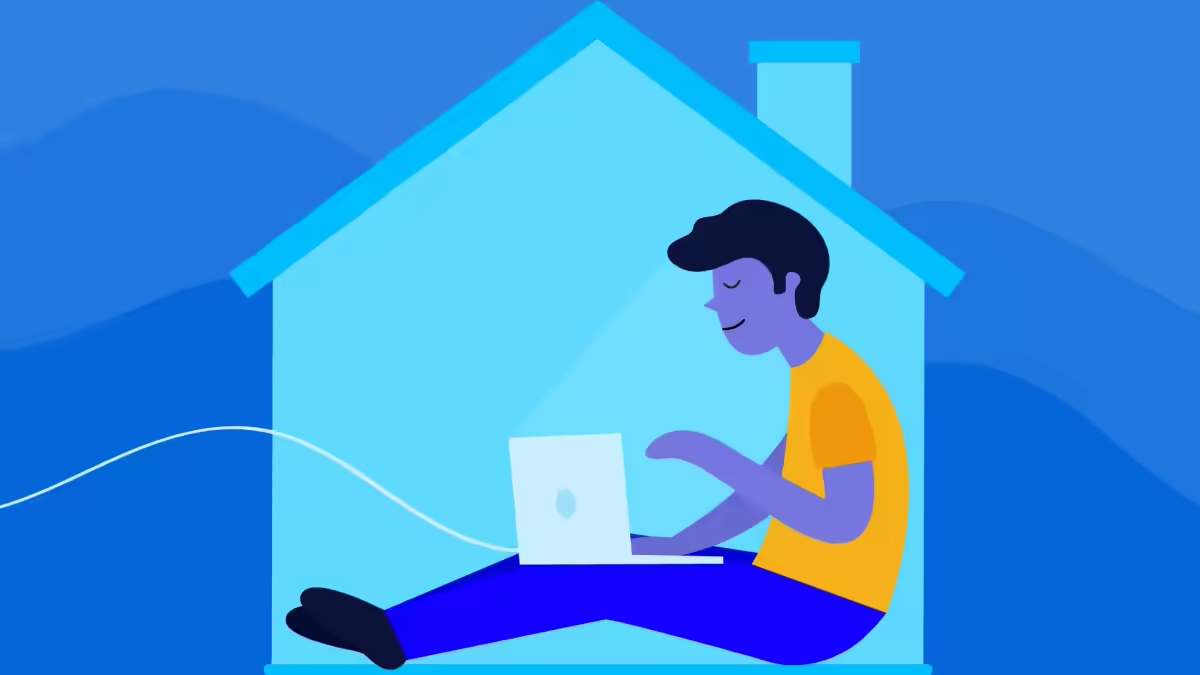Considering the COVID-19 pandemic, numerous organizations are playing it safe in decreasing the further spreading of this infection. A portion of these safeguards incorporate remote working or telecommuting. Remote working is the same old thing, it has been in presence for some time, in any case, the abrupt direness for new working techniques welcomed on by the coronavirus, implies that you may out of nowhere end up working from your home. Here is a rule on how you can guarantee that not exclusively are you guarding against getting the profoundly infectious ailment, however you are remaining gainful in the solace of your home.
1) Build a Permanent Work Space
The initial phase in your "telecommute" venture is to assign a region of your home, explicitly for completing work. This could be an unfilled or extra room that you convert to a home office. On the off chance that you are squeezed for space, you can set up a work area for your PC and office supplies.
Despite space or area, set up a region of your home where you will work, and focus on working right now day. Be certain your workspace is calm so you can concentrate on the job that needs to be done.
2) Invest in Quality Technology
Truly, setting up a home office or workspace may require a little venture. Much like beginning another business, you may need to buy innovation, for example, a work area, PC, tablet, or telephone framework to carry out your responsibility consistently. A superior switch will spare you from numerous innovation bothers. Since telecommuting frequently requires more than visit messages, you need a switch that will keep up. A switch from quite a long while back may be inclined to normal system issues.
3) Get Comfortable Office Furniture
You may likewise need to put resources into office furniture in the event that you haven't as of now. Contingent upon the measure of room accessible, think about buying an enormous work area, bookshelves, and an agreeable office seat.
You don't need to go with the highest point of the line work area. Ikea offers reasonable work areas that are moderately easy to set up in your home office. Join it with an amazing screen arm to amplify your work area space. Keep in mind, the fact of the matter is that you will be working right now day.
4) Set Real Work Hours
Since you have your office or work region set up, it's an ideal opportunity to get serious — actually. In the event that you are going to make telecommuting a regular duty, at that point set explicit business or work hours. The magnificence of telecommuting is that you can be adaptable in setting your working hours. For instance, in the event that you are generally beneficial toward the beginning of the day, or on the off chance that you have to get the children to class, at that point you might need to set your work hours from 7 a.m. until 3 p.m.
Utilize your profound concentration to zoom through your undertakings. Continue perusing to perceive how to deal with your time successfully. Implement a hard breaking point by the day's end. Separation yourself from work, so you don't work relentless.
Despite your calendar, make certain to build up set work hours to follow every day. Convey your work routine to colleagues, groups, and your chief.
5) Avoid Work Creep
A vocation that lets you telecommute can be intrusive in your own life. This is in such a case that you are constantly home and close to your work, at that point your work creeps into your home life. Indeed, the hazard is genuine, yet just in the event that you let it.
This returns to setting work hours. By setting explicit work hours and adhering to them, you will expand execution and build up a solid work routine.
By the day's end, shut down your PC, set your work application to "away," and shut your office entryway. You (and your group) will be appreciative.
6) Don't Work in the Living Room
This is another profitability executioner. A few people may think "telecommuting" is a day to gorge Netflix. Wrong. It may be fine to enjoy this bad habit once, yet it will get up to speed to you in case you're not cautious.
It's savvy to acknowledge why working at home works. It's not just about maintaining a strategic distance from gatherings and telephone calls. Truth be told, an incredible inverse. Telecommuters know the obligation that accompanies working in their quarters.
Maintain a strategic distance from the TV and other advanced interruptions so you can concentrate on your work and completing things. Be that as it may, whenever utilized only for foundation commotion, it's likely alright.
Abstain from staring at the TV while working; it sucks up your concentration from the motivation behind working at home. Rather, stream music that supplements your work style.
Related: Deskless workers: What you need to know
Sibanda Tinotenda is a Consultant at Industrial Psychology Consultants (Pvt) Ltd a management and human resources consulting firm. Phone +263 4 481946-48/ 481950/ 2900276/ 2900966 or email tinotendas@ipcconsultants.com or visit our website at www.ipcconsultants.com

